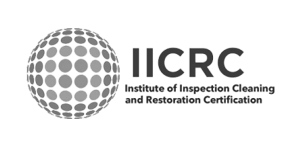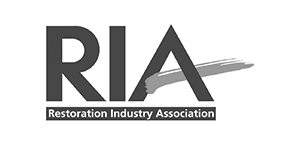Mold growth is a big problem in Ohio homes, affecting health and structure.
So, does wiping mold make it spread more? Knowing how mold spreads is key to removing it right. We’ll look into what makes mold grow and how to stop it.
Key Takeaways
- Mold spreads through air and water, settling on damp surfaces.
- High humidity and moisture levels contribute to mold proliferation.
- Understanding mold spread mechanisms is critical for effective removal.
- Improper cleaning methods can potentially spread mold further.
- Effective mold removal requires a thorough approach.
Understanding Mold and Its Spread Mechanisms
Knowing how mold spreads is key to stopping it. Mold moves through the air and water, spreading spores that find new places to grow. Many things in the environment help this happen.
Factors Contributing to Mold Growth in OH
Several things help mold grow, like moisture and food sources. The EPA says controlling moisture is vital to stop mold.
Moisture is a big deal because it lets mold spores grow. Things like wood and paper give mold what it needs to grow fast.
- Moisture: High humidity and water leaks create ideal conditions for mold growth.
- Organic food sources: Materials like wood and fabric can provide nutrients for mold.
- Lack of air movement: Poor ventilation can lead to stagnant air, which fosters mold growth.
- Temperature: Moderate temperatures can facilitate mold growth, while extreme temperatures can inhibit it.
By knowing these factors, Ohio homeowners can stop mold from growing. They can control moisture, improve air flow, and remove mold food sources.
Does Wiping Ohio Mold Spread It?
Wiping mold can be both good and bad. It might remove visible mold but can also spread its spores. If mold is wiped without care, spores can fly through the air. They then land on other places, causing more trouble.
How you clean mold matters a lot. Wrong methods can spread spores, making things worse. For example, using a dry cloth can send spores flying. But, a damp cloth can keep them in place.
Best Practices for Mold Removal
- Contain the affected area to prevent further contamination.
- Use personal protective equipment (PPE) to avoid exposure to mold spores.
- Employ dampening techniques to minimize the release of spores.
- Use appropriate cleaning solutions that are effective against mold.
Getting help from mold experts is a smart move. They know how to safely get rid of mold. They find and fix the moisture problem that makes mold grow.
Good mold removal means fixing the problem, not just cleaning it up. Knowing how mold spreads and using the right cleaning methods helps. This way, you can reduce mold risks.
Effective Mold Removal Techniques
Learning the best ways to remove mold can greatly lower health risks from mold. Effective mold removal means controlling moisture, removing moldy materials, and cleaning hard surfaces safely.
First, you must control moisture to remove mold. This means finding and fixing the source of moisture, like leaks or high humidity. Fixing the problem stops mold from growing more.
Safe Removal Practices
When you remove mold, wearing protective gear is key. This includes masks, gloves, and goggles to avoid mold spores. For moldy materials like drywall or carpet, it’s best to remove and throw them away.
- Use a mask rated for mold spore filtration to prevent inhalation.
- Wear gloves to prevent skin contact with mold spores.
- Use goggles to protect your eyes from mold spores.
For hard surfaces, get professional cleaning. Use solutions that kill mold. Make sure the area is well-ventilated while cleaning.
Post-Removal Precautions
After removing mold, take steps to stop it from coming back. Make sure the area is dry and control moisture to prevent future mold.
- Verify that the moisture source has been fully addressed.
- Ensure the area is well-ventilated.
- Monitor the area for signs of re-growth.
By using these mold removal methods, you can lower health risks and make your indoor space healthier.
Conclusion
Knowing how mold spreads is key to stopping it. Ohio homeowners can lower mold risks by taking action early. Keeping up with maintenance, like checking for leaks, is important.
It’s also vital to fix any conditions that help mold grow. This means having enough air flow, controlling humidity, and fixing water damage fast. By doing these things, homes can stay mold-free.
Regular checks and quick fixes are essential to avoid mold problems. Being proactive helps keep Ohio homes safe and healthy. Good prevention strategies can make homes safer and healthier for everyone.
Need Water Damage Restoration Help in Ohio? We Got You Covered.
Contact Shambaugh Cleaning & Restoration today for expert water damage restoration services in the Mansfield, OH area!





